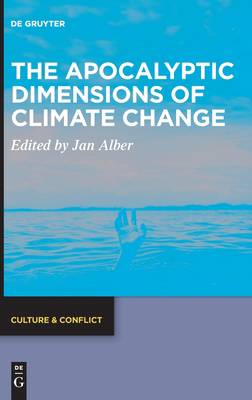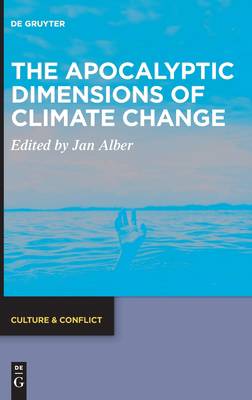
- Afhalen na 1 uur in een winkel met voorraad
- Gratis thuislevering in België vanaf € 30
- Ruim aanbod met 7 miljoen producten
- Afhalen na 1 uur in een winkel met voorraad
- Gratis thuislevering in België vanaf € 30
- Ruim aanbod met 7 miljoen producten
Zoeken
The Apocalyptic Dimensions of Climate Change
€ 126,45
+ 252 punten
Omschrijving
Climate change and the apocalypse are frequently associated in the popular imagination of the twenty-first century. This collection of essays brings together climatologists, theologians, historians, literary scholars, and philosophers to address and critically assess this association. The contributing authors are concerned, among other things, with the relation between cultural and scientific discourses on climate change; the role of apocalyptic images and narratives in representing environmental issues; and the tension between reality and fiction in apocalyptic representations of catastrophes. By focusing on how figures in fictional texts interact with their environment and deal with the consequences of climate change, this volume foregrounds the broader social and cultural function of apocalyptic narratives of climate change. By evoking a sense of collective human destiny in the face of the ultimate catastrophe, apocalyptic narratives have both cautionary and inspirational functions. Determining the extent to which such narratives square with scientific knowledge of climate change is one of the main aims of this book.
Specificaties
Betrokkenen
- Uitgeverij:
Inhoud
- Aantal bladzijden:
- 190
- Taal:
- Engels
- Reeks:
- Reeksnummer:
- nr. 19
Eigenschappen
- Productcode (EAN):
- 9783110734850
- Verschijningsdatum:
- 7/09/2021
- Uitvoering:
- Hardcover
- Formaat:
- Genaaid
- Afmetingen:
- 156 mm x 234 mm
- Gewicht:
- 449 g

Alleen bij Standaard Boekhandel
+ 252 punten op je klantenkaart van Standaard Boekhandel
Beoordelingen
We publiceren alleen reviews die voldoen aan de voorwaarden voor reviews. Bekijk onze voorwaarden voor reviews.










